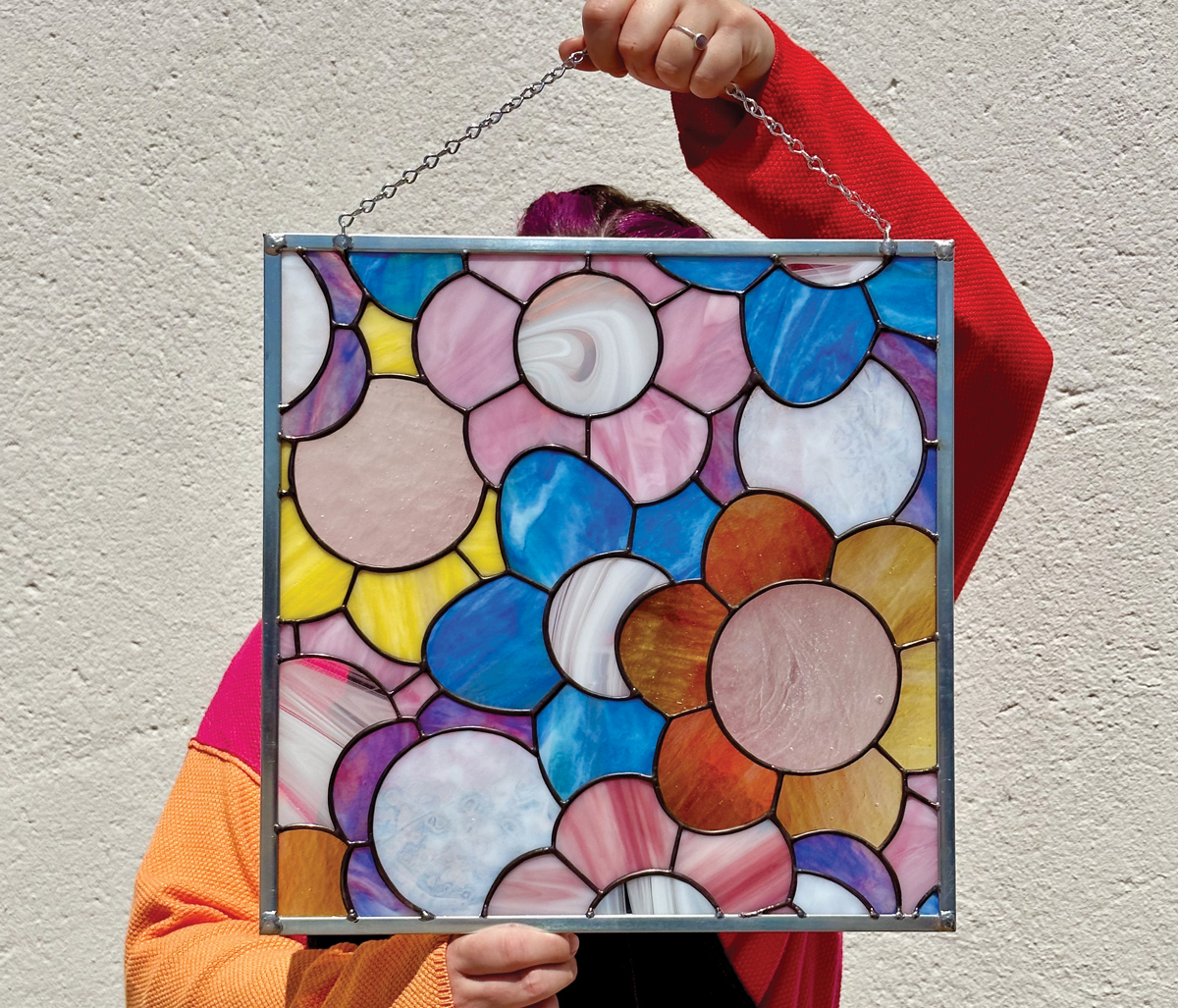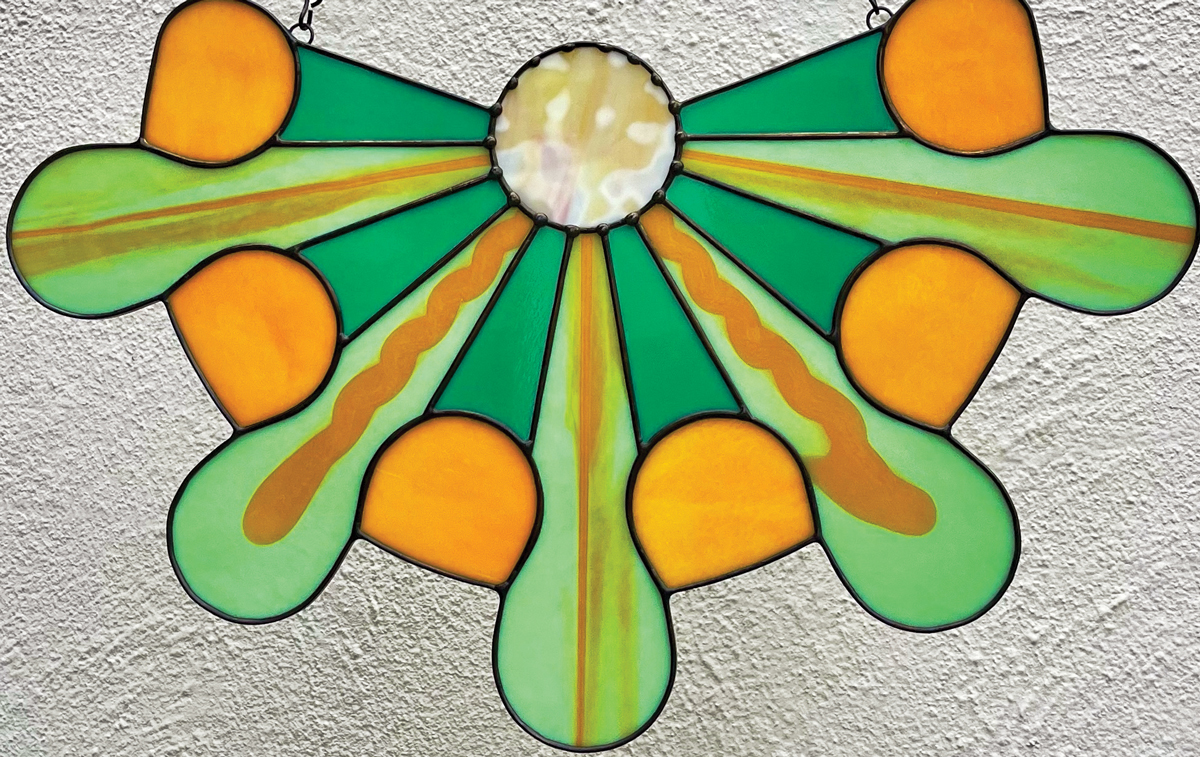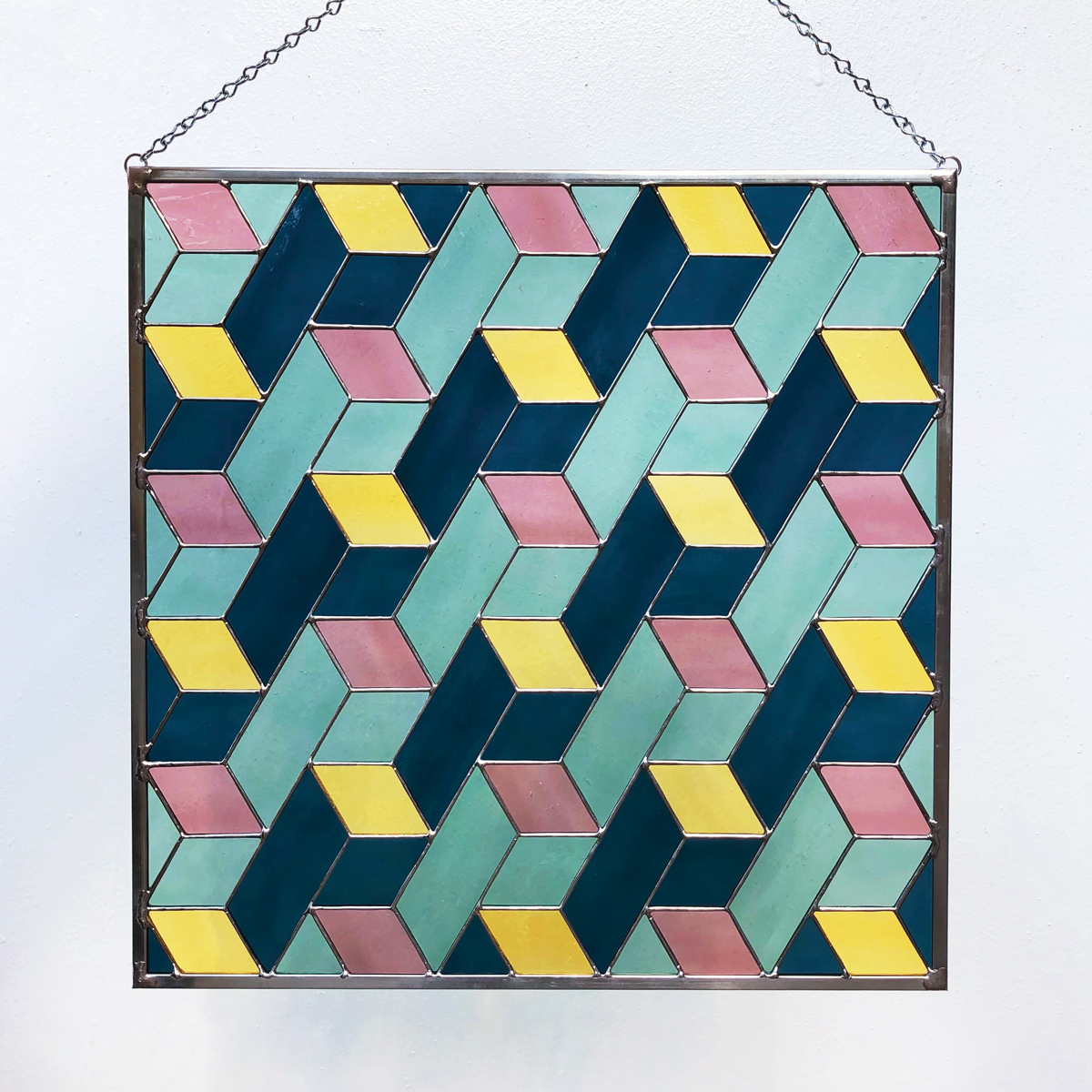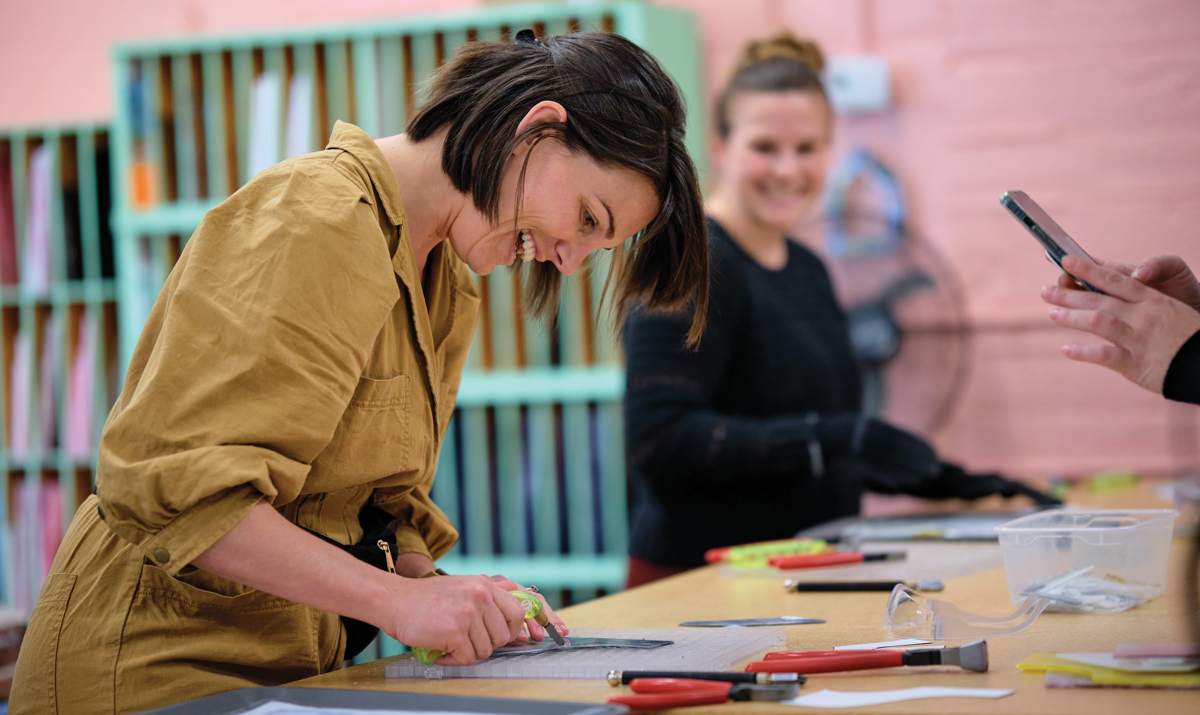
Photograph courtesy of Day Kennedy
In a ground-floor studio of Met Atlanta, a creative office complex in the West End, you’ll find ATL Glassworks, a haven for stained glass makers and enthusiasts. The space is cheerily designed: Bubblegum-pink accents line the concrete walls; a lime-green couch anchors a sitting area while suncatchers adorn the windows. In the back, a workspace awaits artists looking to make their own creations or take a class.
Then there’s the glass: Thousands of glass panels line bookshelves, inviting stained glass makers to peruse the offerings. “Glass is magical,” says founder Day Kennedy as she lays a smooth, blue-green glass sheet on an illuminated light table, revealing watercolor swirls. “There are so many different color combinations and textures.” It’s no wonder that her customers come from as far as Alabama to shop for glass and tools or to pick up some of her art.
Kennedy founded ATL Glassworks in 2021, after stumbling across stained glass–making by accident a few years before. “I’ve always been a hobby collector,” she says. “I’ve done everything, like watercolor and embroidery. Technically I know how to knit,” she adds with a laugh, “even though I’ve never completed anything.”
In 2017, Kennedy was watching YouTube videos to teach herself to weld when the algorithm presented her with another tutorial—this one for making stained glass. “I bought a terrible quality starter kit and started playing around with it,” she says. “I was hooked and immediately fell in love with it.” Kennedy worked in graphic design at the time but began a side business selling her suncatchers at markets around town.

Photograph courtesy of Day Kennedy

Photograph courtesy of Day Kennedy
Stained glass is an ancient art form that had its cultural heyday during the medieval period, when cathedrals installed stained glass windows depicting biblical scenes. Kennedy presents a modern twist on the art: Her first pieces were birds, peaches, and art deco–inspired designs. Since then, her work has evolved to include geometric-meets-abstract creations and more cheeky pieces, such as butts (yes, human butts) in various shapes and sizes. But Kennedy says she’s most proud of her pet portraits. Unlike an abstract, the pet portraits require accuracy, as she attempts to match the dog’s likeness using glass.
Early artists used hot irons to cut glass, but today’s modern tools simplify the process. Kennedy creates a pattern using a digital design program, then traces it onto the glass before scoring it into separate pieces with a handheld, wheel-shaped cutter. “Then we wrap it in copper foil and solder it all together,” she explains. “Picking out glass for designs, I think, is the hardest part—so many options.”

Photograph courtesy of Day Kennedy
Kennedy offers classes several times a month, during which the stained glass curious can dip their fingers into the craft. Students select from a list of design options, like a cowboy boot or a flower. They then spend four hours learning about the process of stained glass making, which includes cutting glass, grinding the edges, and then soldering the whole piece together. “If you like the process, we sell all the stuff to get you started, and you can set up a home studio, or we do open studio time as well,” says Kennedy.
Since Kennedy first began selling her wares, she’s noticed that more people are interested in making their own stained glass, and that buyer enthusiasm for stained glass art is increasing. “That’s one of the reasons why I like having the shop,” says Kennedy. “I want to foster that community. I want everyone to be in love with stained glass.”
This article appears in our January 2025 issue.
Advertisement




